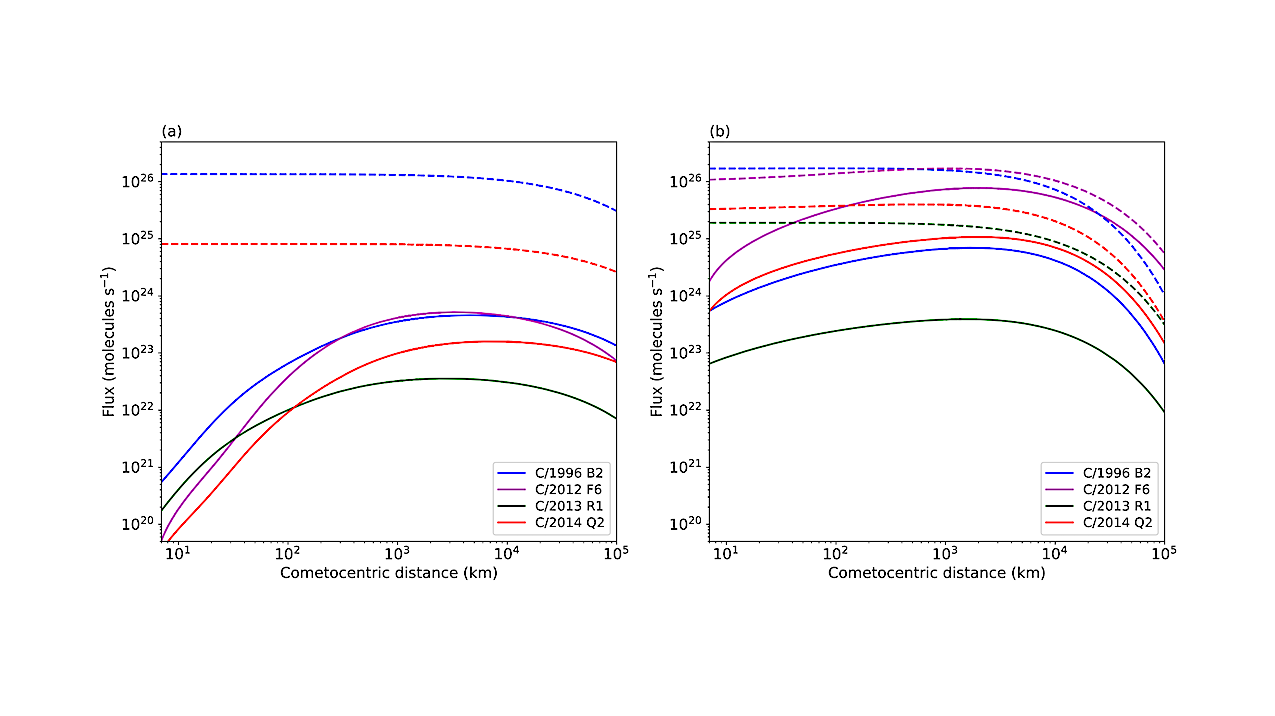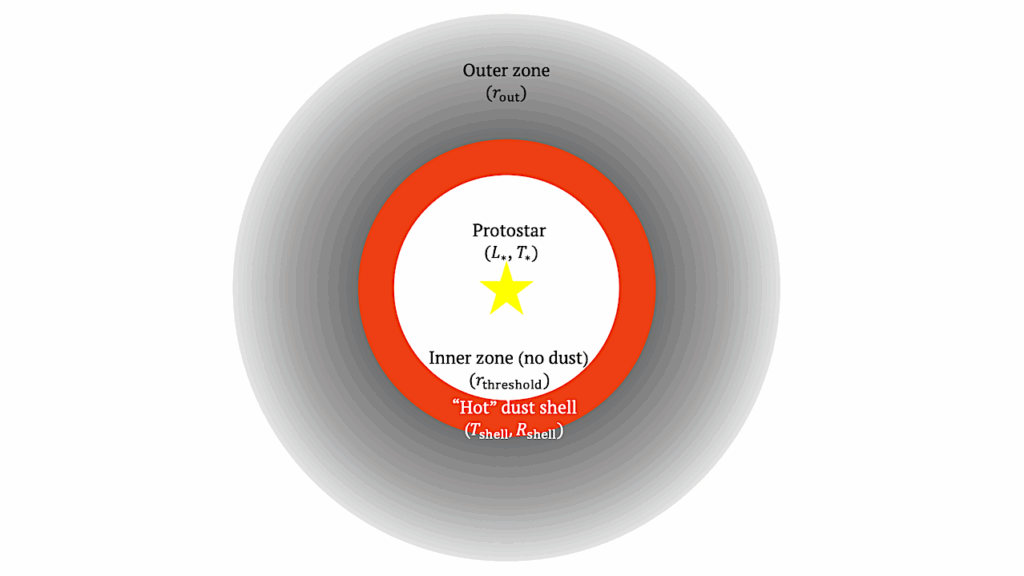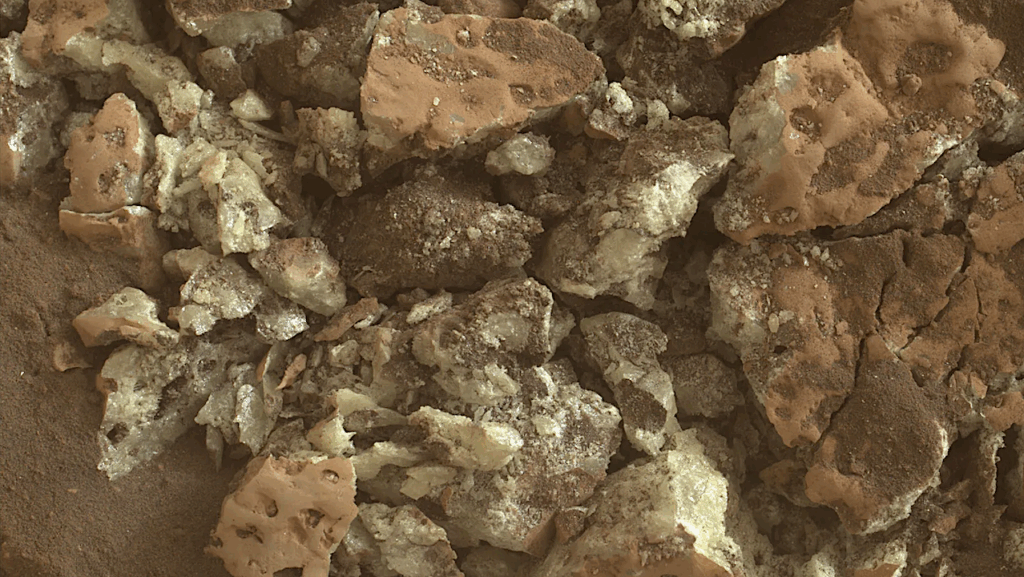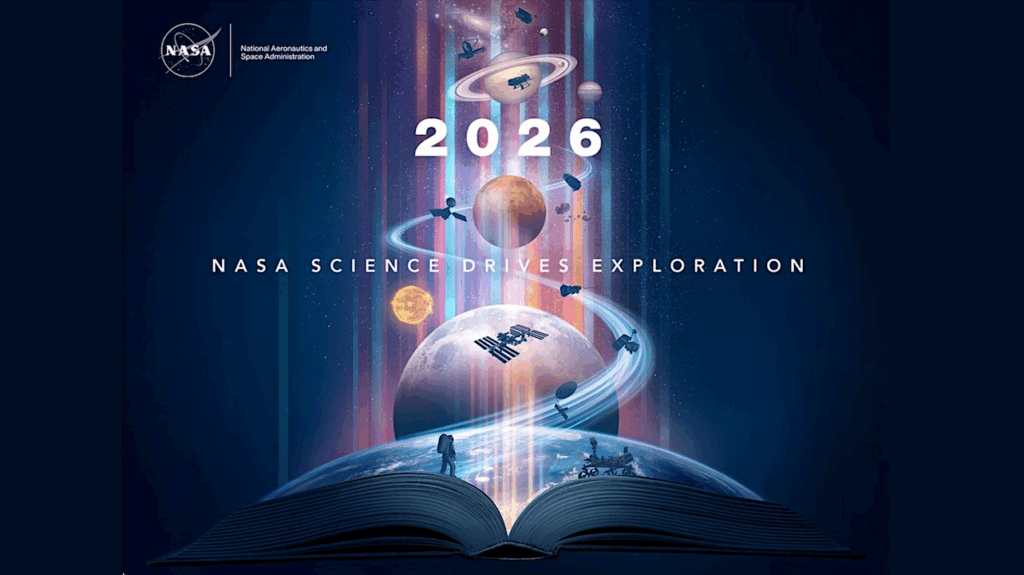The Extent of Formation of Organic Molecules in the Comae of Comets Showing Relatively High Activity

Comets are a rich reservoir of complex organic molecules. Ground and space-based observatories have recently greatly enhanced the cometary molecular inventory.
Although these molecules’ origin is believed to be the cometary nucleus, they can be partially synthesised in the coma. We studied organic molecules’ nucleus versus coma origins for various initial conditions, using a multifluid chemical-hydrodynamical model and an updated chemical network.
For the study, we considered four comets [C/1996 B2 (Hyakutake), C/2012 F6 (Lemmon), C/2013 R1 (Lovejoy), and C/2014 Q2 (Lovejoy)] due to their relatively high activity and observation of large number organics species. We emphasised the C-H-O and N-bearing species, including the simplest amino acid, glycine.
We discuss the formation pathways of the organics and the conditions for their formation in the coma and find that the abundance varies from one comet to another due to differences in the initial conditions, relative abundances of the reactants and temperature.
We compare the organic abundances when they are present as parent volatiles to their formation solely due to gas-phase chemistry. Their abundance purely due to the coma chemistry is moderately to significantly lower compared to that when they are parent volatiles.
However, we find that the production rates of some of the coma-synthesised organic molecules can reach peak values of 1e22 – 1e26 molecules/s , which is in the realm of detection by in situ/space-based observations, and can therefore be important considering future missions to comets. We also compare our modelled abundances with those observed in 67P/C-G by Rosetta, which detected several organics at a large heliocentric distance and low production rate.
Sana Ahmed, Kinsuk Acharyya
Subjects: Earth and Planetary Astrophysics (astro-ph.EP)
Cite as: arXiv:2207.13288 [astro-ph.EP] (or arXiv:2207.13288v3 [astro-ph.EP] for this version)
https://doi.org/10.48550/arXiv.2207.13288
Focus to learn more
Submission history
From: Sana Ahmed
[v1] Wed, 27 Jul 2022 04:29:27 UTC (2,139 KB)
[v2] Thu, 14 Dec 2023 08:24:30 UTC (2,541 KB)
[v3] Wed, 22 May 2024 09:40:30 UTC (2,173 KB)
https://arxiv.org/abs/2207.13288
Astrobiology, Astrochemistry,








